- Yokohama-shi Top Page
- Living and Procedures
- Community Development and Environment
- Environmental Conservation
- Survey and observation
- Institute for Environmental Science
- Business description
- Atmospheric and Water Environment Research
- Research on the atmosphere and water environment
Here's the text.
Research on the atmosphere and water environment
Last Updated May 22, 2023
Asbestos
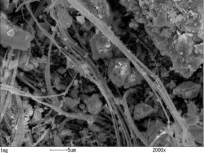
Asbestos is a generic term for natural fibrous silicate mineral. Due to its excellent properties such as heat resistance, chemical resistance, anti tension, abrasion resistance, and insulation, it is said that there are more than 3,000 types of use such as construction materials, electrical products, automobiles, household goods, etc. However, due to issues such as carcinogenicity, it is not currently manufactured in Japan.
Yokohama City has been conducting an asbestos concentration survey since 2006 to grasp the actual situation of asbestos concentration in the atmospheric environment in the city area.
There is no national environmental standard for asbestos in the atmospheric environment, but according to WHO Environmental Health Kurai Territeria, the asbestos concentration in the general environment in urban areas around the world is "about 1 to 10 bottles / liter. At this level, the health risk is so low that it cannot be detected. " I don't think it's a problematic level because it's all below the results of Yokohama's previous survey.
Survey results (asbestos survey results in atmospheric environment)
Microplastic
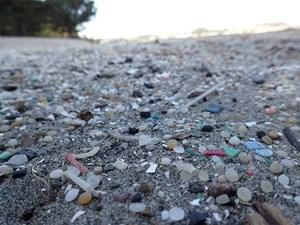
Coastal microplastics
In recent years, marine pollution caused by microplastics has become an international issue. Microplastics are collectively referred to as plastics less than 5mm, and have been found in rivers, marine water, and even in the body of marine organisms.
Yokohama City has been conducting surveys along the coast since 2017 to understand the actual situation of microplastics in the environment in the city. The results of the survey are published in reports, presentations, and events of the Institute for Environmental Science. In addition, we conduct dispatch lecture/off site lecture in elementary schools and other places regarding marine pollution caused by microplastic and plastic waste.
Results of the survey
Results of microplastic survey
Video corner
Let's learn!
What is "microplastic"? What is your relationship with our lives?
What are your efforts at the Institute of Environmental Science?
Let's think about what we can do to protect our precious environment!
Let's try it!
Where are plastic waste and microplastics located?
Let's actually observe familiar places such as the city and the coast!
※If you bring home the sand of the park or sandy beach, follow the rules of the park or local government!
Download a form that allows you to investigate microplastics at home.
Acid rain
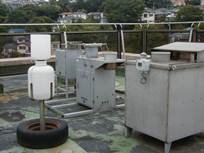
Acid rain is the rain in which sulfur oxides, nitrogen oxides, etc. emitted from factories and automobiles react with water in the atmosphere to become sulfuric acid and nitrate, which dissolve in the rain and become acidic. Generally, it refers to "rain of pH 5.6 or less", indicating that the smaller this value, the stronger acidity.
In 1979, we started a survey on acid rain. Long-term monitoring of acid rain has been carried out in Takito, Isogo-ku from 1984 to 2014, and in Ebisu-cho, Kanagawa-ku from 2015, measuring pH and electrical conductivity (EC, μS / cm) for each rainfall. I am.
As a recent trend, the pH of precipitation has dropped sharply around September 2000, but this is due to the effects of the eruption of Miyakejima Volcano that occurred in the same year, acid gas components in the plume It is thought that it was taken during precipitation.
In addition, strong acidity rain has been seen intermittently since then, but pH tends to gradually recover.
Monitoring results (acid rain information)
Hazardous air pollutants
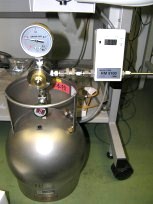
"Hazardous air pollutants" are substances that have low concentrations but may impair human health due to long-term exposure.
Although no specific substance names have been specified for hazardous air pollutants, 248 substances were indicated as "substances that may fall under harmful air pollutants." Of these 248 substances, 23 substances, which are considered to have a certain high health risk, were selected as "priority initiatives."
Currently, the Institute and the Environmental Environmental Pollution Monitoring Center are conducting surveys on 23 priority substances in Yokohama, and the Institute conducts surveys on hazardous air pollutants in the environment once a month at three locations in the city.
Measurement results (measurement results of hazardous air pollutants)
Water pollution
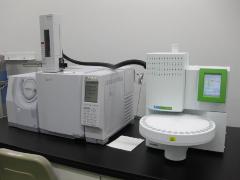
We analyze wastewater discharged from factories and business sites to public water bodies and confirm that wastewater standards under the Water Pollution Control Law and regulatory standards stipulated in the Yokohama City Ordinance are complied with. When a water quality accident such as turbidity / coloring, oil spill, or large death of fish is discovered in a public water area, various water quality analysis is conducted to investigate the cause based on a request from the Water and Soil Environment Division. . Groundwater is also measured based on the water quality measurement plan in Kanagawa Prefecture.
If you find a water quality accident, please call the Water and Soil Environment Division Water Quality Section (TEL: 045-671-4244).
Overview of water quality accidents (page of Water and Soil Environment Division)
Groundwater quality measurement results (Environment Environmental Pollution Monitoring Center page)
Survey on the Environment of Chemical Substances
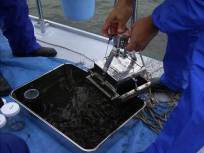
At present, a wide variety of chemical substances are used, but there are many substances that may have a negative impact on humans and ecosystems depending on how they are produced, used and disposed of. Since 1974, the Ministry of the Environment has been conducting surveys on the environmental conditions of chemical substances every year in cooperation with local governments nationwide to promote the safety management of chemical substances, prevent environmental pollution, and monitor the status of residuals. In cooperation with this national survey, we conduct research on water quality, bottom sediment, living organisms, and chemical substances in the atmosphere.
Chemical Substances and Environment (Ministry of the Environment) (outside site)
Dioxins
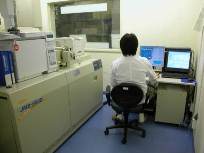
Dioxins are a type of organic compounds containing chlorine (Cl), which are unintentionally generated when burning substances containing chlorine or as by-products or impurities in the process of producing chemical substances. Since even a small amount is highly toxic to humans, environmental standards have been established and emission reduction measures have been implemented.
The concentrations in the city's atmospheric environment and rivers are now decreasing and meet environmental standards.
Radioactive substances
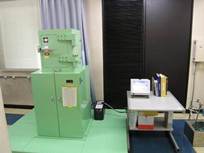
In order to dispel citizens' concerns about the effects of radioactive materials caused by the Fukushima Daiichi Nuclear Power Station accident, an environmental radioactivity measurement device (germanium semiconductor detector) is used to inspect sewage sludge incineration ash, seawater, microspot sludge, etc. I am.
Radiation-related information (Yokohama City Radiation Control Headquarters)
You may need a separate PDF reader to open a PDF file.
If you do not have it, you can download it free of charge from Adobe.
![]() To download Adobe Acrobat Reader DC
To download Adobe Acrobat Reader DC
Inquiries to this page
Environmental Science Research Institute, Environmental Conservation Department, Green Environment Bureau
Telephone: 045-453-2550
Telephone: 045-453-2550
Fax: 045-453-2560
Email address: mk-kanken@city.yokohama.lg.jp
Page ID: 113-521-738







